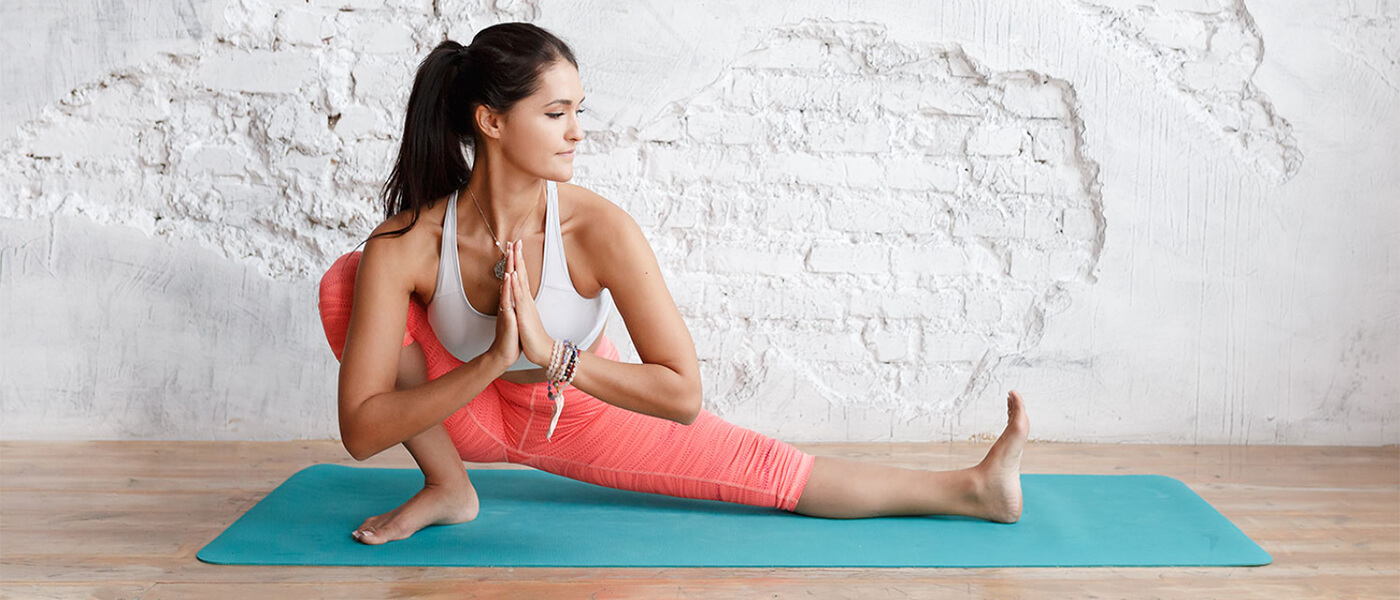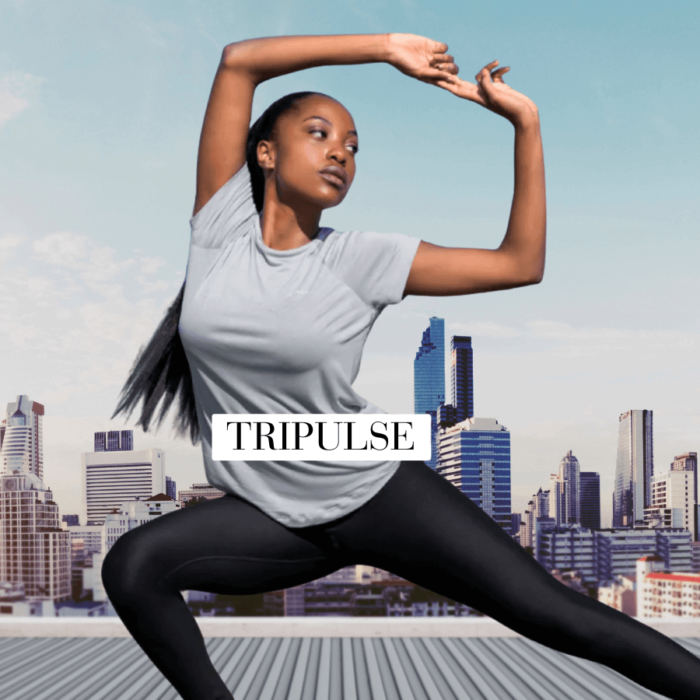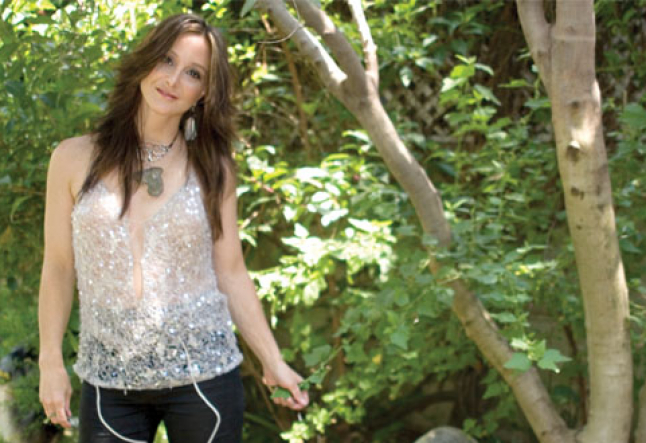Why do Hip Openers release emotions?

Why am I crying for no reason with hip openers poses
I’ve seen many people in the global yoga community raise this question: “Why do I feel sad for no reason in pigeon pose?”, “Why am I crying for no reason in hip-opening stretches?”, “Why do hip openers release emotions?”, I have felt the same emotions after practicing a hip-opening yoga class.
After the course, I started feeling profound sadness and didn’t have the courage to continue yoga practice a few days down the road.
I didn’t understand where the sadness was coming from until I had a suspicion that I was feeling it from the hips.
I started investigating the question on an online yoga community, and to my surprise, this was a common question raised by many other yoga practitioners.
It was clear to me that there was a connection between emotions (especially sad ones) and the hips.
The commonness of this question is reinforced by the number of articles that show up on search engines, in which they mention the relation between hip opening poses and sadness and further describe emotions stored in body parts.
So here is an inclusive walk down of a few reasons why we feel the way we feel in a pigeon pose.
Why do i feel sad in hip-opening yoga poses?
Anatomy of the hips
Hips are a support system for the entire body – Hips are the largest joints in the body, and they operate in tandem with the spine to support the upper body and posture and allow for simple actions such as walking and sitting.[1]
Psoas is a one-of-a-kind muscle. It’s the only muscle that connects the spine to the femur bones.
The psoas starts at the body of the 12th thoracic vertebrae and the discs between vertebrae.
Then it continues down the lumbar spine, passing over the ilium and inserting into the lesser trochanter on the inside of the femur bone.[2]
An extensive range of muscles surrounds the hip bones, allowing for flexion, extension, internal and external rotation, as well as abduction and adduction.
When we open our hips, we are normally focused on loosening the muscles surrounding the joint, which aids in the increase of synovial fluid, which contributes to greater ease of movement.
Pigeon pose would stretch the muscles used for abduction, and Upavista Konasana (wide-angle seated forward) would stretch adductor muscles.
The muscles and tissues surrounding the pelvis may hold a lot of strain. However, most of us don’t take advantage of the hips’ entire range of mobility. As a result, areas of the hips become stiff.[3]

Source: Ali Cramer(2021.9.17). “The Yoga of the Hips”. YogaAnytime.
Also read >>> 2 Person Yoga Poses
Fight or flight response and the hips[4][5]
Now anatomy is out of the way, so what has hip muscles got to do with the emotional flood? Imagine a situation where you are sitting somewhere, and your friend appears out of nowhere and scares you.
Your first instinct would be to contract your body muscles strongly and curl up into a fetal position to protect your core.
And consider your hip at this stage – it’s very tightly clenched. When we are furious, threatened, intimidated, or startled, we reflexively clench our jaws and fists and raise our knees to crunch. Similarly, activating the hip flexors to get into a fetal position is our natural response.
During traumatic experiences, when the nervous system receives threatening information about the body being attacked, the body goes into high alert mode, the psoas muscles tighten and contract as a defense and protection mechanism.
Also Read>>> 3 reasons why it is okay to cry in a yoga class
And when the muscles clench, they shorten. If the tension is never fully released (which often isn’t), the same goes for the cognitive emotion perceived at that point.
During that event that caused the hips to tense, the brain launches chemistry signals to inform the nervous system, and the residue of this emotion gets stored in the hips.
Emotions and the hips
According to science, the physical body and emotions are closely linked. According to a 2019 study, certain emotions are linked to specific parts of the body.
What’s interesting is that these correlations are universal across cultures and sex assigned at birth.[6] Cell consciousness can be explained by the presence of nano brains, according to a study published in a 2021 study, and cells are “highly sensitive” to sensory stimuli as well as internal and extracellular electromagnetic fields.[7]
Candace Pert, a neurologist, discovered in 1985 that tiny proteins called neuropeptides trigger emotional pathways. “Your body is your subconscious mind,” she famously said, adding that the actual body can change depending on how we’re feeling.
Emotions, according to Pert’s research, are electrochemical signals that carry emotional data throughout the body.
The body and mind then express, experience, and store these feelings. This can affect brain activity and modify the cell, resulting in a positive or negative effect on the body.
According to Pert’s research, each cell has its own awareness that maintains memories and emotional states.[8]
The diaphragm is a reactive emotional center that governs breath. The psoas is attached to the diaphragm through the fascia and the medial arcuate ligament. Psoas and diaphragm work together with each breath to provide anterior spinal stability.
The diaphragm and the psoas react together to fear and stress. The psoas muscle, like the breath, becomes short and acute while in “fight or flight” mode.
The psoas also connects us to the primitive brain, also known as the brainstem and spinal cord, which has its roots in the spine. It’s hence, simple to see why the psoas is such an emotional powerhouse, with connections to both breath and the brain’s deepest layers.
Also Read>>> Hip Openers
Liz Koch[9], a well-known bodyworker and author who has dedicated much of her professional practice to educating people about the psoas, writes, “The psoas is a messenger of the core…. coalescing the central nervous system with the enteric (gut) brain, the psoas literally embodies our deepest urge for survival, and more profoundly, our elemental desire to flourish….
Illuminating an energetic resonance, our psoas is truly a dedicated support system for being a coherent human organism.”
She goes on to describe the implications of tight psoas on the body. “The psoas is so intimately involved in such basic physical and emotional reactions that a chronically tightened psoas continually signals your body that you’re in danger, eventually exhausting the adrenal glands and depleting the immune system.”[10]
To sum up, since hip muscles are where emotions are trapped caused by events that switch your fight or flight mode, working on deep tissues in hip-focused postures like pigeon pose can release both physical and emotional stress.
While stretching the hips muscles releases pent-up emotions, it may also bring up memories that have been buried deep. Even feelings from situations that occurred many years ago can remain trapped within. All of this can result in an outpour of unexplainable tears.
More reasons why: Hips are connected to the sexual core (The Sacral Chakra)
The hip region is also associated with our second chakra, Svadhisthana (Sacral Chakra), an energetic center thought to house creative energy and sexuality and is linked to emotions. Emotional instability and reductions in pleasure are thought to be symptoms of a blocked chakra.
Unblocking that chakra by opening the hips could result in an outburst of emotion, similar to the unconscious exploding into consciousness.[11]
We already talked about how hips can carry memories of past events. The psoas is particularly vulnerable during sexual trauma, as it is pushed to comply with the physical and emotional strain imposed against our wills.
Taking a warm bath or getting a massage can be a solution for stiff shoulders or feet. But the psoas is a more complicated muscle.
Each new triggering event adds to the stress and builds it up.[12] There are far too many people who have stories to tell about a time when someone tried to take control of their bodies and got away with it guiltless.
Almost every woman I know has a tale to share, and many men do as well these days. This saddening but necessary truth to be told might also be the reason why opening the hip muscles may cause sadness.[13]
Why do hip openers release emotions? Yoga brings emotions to the surface
But it isn’t only the hip opening poses. Yoga makes people emotional. Some people talk about how refreshed, and great you will feel after Yoga. Some people say they overcame depression by practicing Yoga and meditation.
These are all very true positive effects of Yoga. However, it can leave you confused when you feel sad or depressed while/after practicing Yoga, exactly the opposite of what you should be feeling.
Feeling sad, depressed, agitated, and angry after Yoga often goes undiscussed. This may be because we don’t think there should be a connection between the two. But let us assure you, you are not the only one.
Yoga is a state of being connected and a set of techniques that teach us to connect to anything. It’s more than a high-intensity, sweat-inducing workout.
Resting asanas like corpse position (Shavasana) and heart opener pose like backbends are also on the list of tear inducers, according to many sources.[14] Yoga and meditation, in general, is a process of increasing awareness, and increased awareness means increased thoughts and feelings.
During yoga practice, we don’t try to control our thoughts and emotions.
We, in fact, try to breathe into those thoughts and emotions and let go of the controls over our emotions, while in daily lives, we try to suppress the thoughts that are making us uncomfortable.
In the states of increased awareness, the first things to rise up to the surface may be the things that you have been avoiding the most.
This awareness can be uncomfortable but can also be a signal our body is sending out to us. To guide us to uncover in what part of life we have been neglecting, be it our health, relationships, finances or careers.
This awareness can propel us to make a decision to change the way things were so far done in our lives.
Crying during meditation

Likewise, crying during meditation is also a common phenomenon experienced by many people.
The reason behind it is pretty similar to that of why we call during yoga. When you continue to meditate, you are less conscious and less focused on the thousands of thoughts crossing your mind that keep you occupied.
Your mind calms down, and because of this, you can access deeper layers of your emotions and subconsciousness.
As you reach a state of inner serenity and silence, old emotions you previously sought to ignore or suppress into your subconscious rise to the surface.
The resurfacing of old feelings can trigger emotional responses in the form of crying. You can finally let go of the emotions locked in your subconscious when you cry during meditation.
And when you do, the crying we can experience during meditation can be related to either past negative or positive emotions that finally found a way out. It can also be associated with the raw emotion of the present moment, whether positive or negative.
The positive triggers can be the following:
- You feel a sudden wave of peace and happiness, the so-called tears of joy. Some meditation aims for this exact purpose. Gratitude meditation, for example, urges practitioners to make a list of the things for which they are grateful. This technique can increase our happiness, reduce depression, improve immune function, lower blood pressure, and improve our connections with others.
- You may be able to sense a divine and a higher presence and be overcome with appreciation and overwhelmed for their existence.
- You connect with your inner being, constantly present and made of pure love, and you experience a deep sense of joy. Connecting with your inner being can also be referred to as a state of self-awareness. Self-awareness is the ability to view yourself objectively and clearly through contemplation and introspection. It is also known as recognizing and understanding one’s own emotions.
- You develop self-compassion, which enables you to recognize and embrace your emotional needs rather than dismiss them.
- You become aware of an important truth. Truth is something you may not have realized before, such as being sincerely loved by those around you or feeling deeply grateful for what you have, both of which naturally elicit strong feelings.
Discovering the truth can be beneficial or detrimental. On the plus side, this practice can help you recognize that you live in a world full of love, which may stimulate deep emotions and cause you to cry. On the other hand, it may assist you in recognizing that you are unhappy with yourself, your environment, your lifestyle, your career, or a significant other. As a result, feelings of uneasiness, anguish, or despair arise.
Also Read>>> Yoga Classes
- All these positive triggers could cause you to start crying during meditation.
The negative triggers can be the following:
- You become aware of negative previous behaviors or recollections that make you feel guilty or sad, and you cry as a result.
- You become aware of underlying, suppressed emotions that, despite not being fully understood, might cause unpleasant feelings.
- You don’t feel as pure as you’d want, which is a natural reaction to the positive energy surrounding you during meditation, which can occasionally draw attention to your flaws.
- You let go of sentiments you no longer require, therefore purifying all suppressed emotions that no longer serve a purpose.
- As previously stated, you are aware of an unpleasant truth, such as not being fully satisfied with yourself or others.
- You can’t focus on the meditation as wholly as you want to. Therefore, feeling frustrated and agitated.
These emotions, whether positive or negative, may sound exaggerated. I was also one of the skeptics of meditation’s benefits, such as self-awareness and recognition of spiritual truth.
To me, they said far too spiritual. But, after practicing meditation with an open mind, I’ve experienced tears during meditation, both joyful and sad, provoked by all of the above reasons, to my surprise.
Regardless of the triggers, each time spent in meditation is wholesome. What you experience during a meditation session is neither right nor wrong. Everything is just as it is, and one of the fundamental aims of meditation is to become aware of these emotions.
Also read >>> Sacral affirmations
Because we have the time and space for it
Last but not least, people living a modern life are busy. We are addicted to productivity, and we are never not doing something.
We are literally always paying attention to something or tending to something. If we finally had the time to relax, would you be paying attention to your feelings?
My guess is that we are all probably thinking of what to do next. But with Yoga, while you are in your asanas, you inevitably have physical space and time created for you, and you can’t escape it.
It’s the time and space solely dedicated to Yoga. It’s like an imposed stop to whatever you were doing and thinking. And this is when you can really start to realize your feelings and emotions simply because you have to.
Whatever the reason is, your hips don’t lie. Your body won’t lie.
So you can’t really get away from your own mess while practicing Yoga, which is all the more reason to do it. To figure out what’s blocking you and to remove those blocks and set yourself free from long carried burdens.
So, let’s all, with courage, embrace this discomfort and humbly get back down on our mats.
Yoga for hips
Some hip openers increase the external or outward rotation of the femur bone in the hip socket.
Others work on lengthening the psoas muscle, a major hip flexor that connects the torso and legs and is frequently shortened in our chair-bound lifestyle. Hip-openers come in a variety. Some basic hip-opening yoga postures you can try are as follows:
- Pigeon pose (Eka Pada Rajakapotasana) – This pose by far seems to be the number one cause for “why do I feel sad for no reason during yoga class?”, which may be the reason why this pose is called the “King of hip-openers.”
It is because pigeon pose is an exceptionally effective hip opener that targets both the external rotation and stretch of psoas muscles, with the front leg working in external rotation and the back leg stretching the psoas.
The Pigeon pose comes in many variations. To practice safely, approach the pose by first executing poses that gently open the hips. Once you have created enough space in the hips, then proceed to more advanced pigeon poses like a forward bend in the one-legged pigeon or a king pigeon, or even a double pigeon pose. - Frog pose (Mandukasana) – Frog pose is also a strong hip-opener that addresses your core, inner thighs as well as hips.
This pose can be pretty challenging and is therefore often accompanied by conscious breathing to guide yourself to sink deeper. Beware of breathing deeply and focusing on releasing tension.
If the pose is too intense, you can bring your weight forward onto the arms to reduce too much weight to go onto your hips. - Other hip-opening stretches: Butterfly pose (Baddha Konasana), Reclined bound angle pose (Supta Baddha Konasana), Wide-angle seated forward bend (Upavistah Konasana), Low lunge (Ashwa Sanchalasana), and Malasana (Garland Pose) are other hip-opening poses.
[1] Charlie Watkins (2018.03.27). “Hip Opening to help with emotional release”. https://www.kalimukti.com/blog/hip-openers-and-emotional-release.
[2] Pilates Nosara (2017.02.07). “The Emotional Core, aka the Psoas”. https://www.pilatesnosara.com/post/2017/02/07/the-emotional-core-aka-the-psoas.
[3] Charlie Watkins (2018.03.27). “Hip Opening to help with emotional release”. https://www.kalimukti.com/blog/hip-openers-and-emotional-release.
[4] Anna Sugarmon.
“Are emotions stored in the hips?”. https://www.ekhartyoga.com/articles/practice/are-emotions-stored-in-the-hips.
[5] Zenbear, “The profound link between hips and your emotions”. https://www.zenbear.co.uk/latest-news/hips-and-your-emotions-yoga.
[6] Volynets, S., Glerean, E., Hietanen, J. K., Hari, R., & Nummenmaa, L. (2020). Bodily maps of emotions are culturally universal. Emotion, 20(7), 1127–1136. https://doi.org/10.1037/emo0000624.
[7] František Baluška, William B. Miller, Jr. and Arthur S. Reber. (2021). Biomolecular Basis of Cellular Cousciousness via Subcellular Nanobrains. International Journal of Molecular Sciences. 2021 Mar; 22(5):2545.
[8] Julianne Ishler (2021.6.17). “The powerful connection between your hips and your emotions”. https://www.healthline.com/health/mind-body/the-powerful-connection-between-your-hips-and-your-emotions.
[9] Liz Koch (2012). “The Psoas Book”. Guinea Pig Pubns; 3rd edition.
[10] Pilates Nosara (2017.02.07). “The Emotional Core, aka the Psoas.” https://www.pilatesnosara.com/post/2017/02/07/the-emotional-core-aka-the-psoas.
[11] Julia Layton. “Yoga makes people super emotional. But why?” https://health.howstuffworks.com/wellness/diet-fitness/yoga/yoga-makes-people-super-emotional-why.htm.
[12]Traumaconsciousyoga. “The psoas muscle: How it holds onto trauma and how to let it go with yoga.” https://traumaconsciousyoga.com/psoas/.
[13] Emily A.Francis. “Muscle-Emotional Connection: The Emotion Behind the Psoas Muscle”. http://www.sfyogamagazine.com/blog/2019/6/13/muscle-emotional-connection-the-emotion-behind-the-psoas-muscle.
[14] Julia Layton. “Yoga makes people super emotional. But why?” https://health.howstuffworks.com/wellness/diet-fitness/yoga/yoga-makes-people-super-emotional-why.htm.




